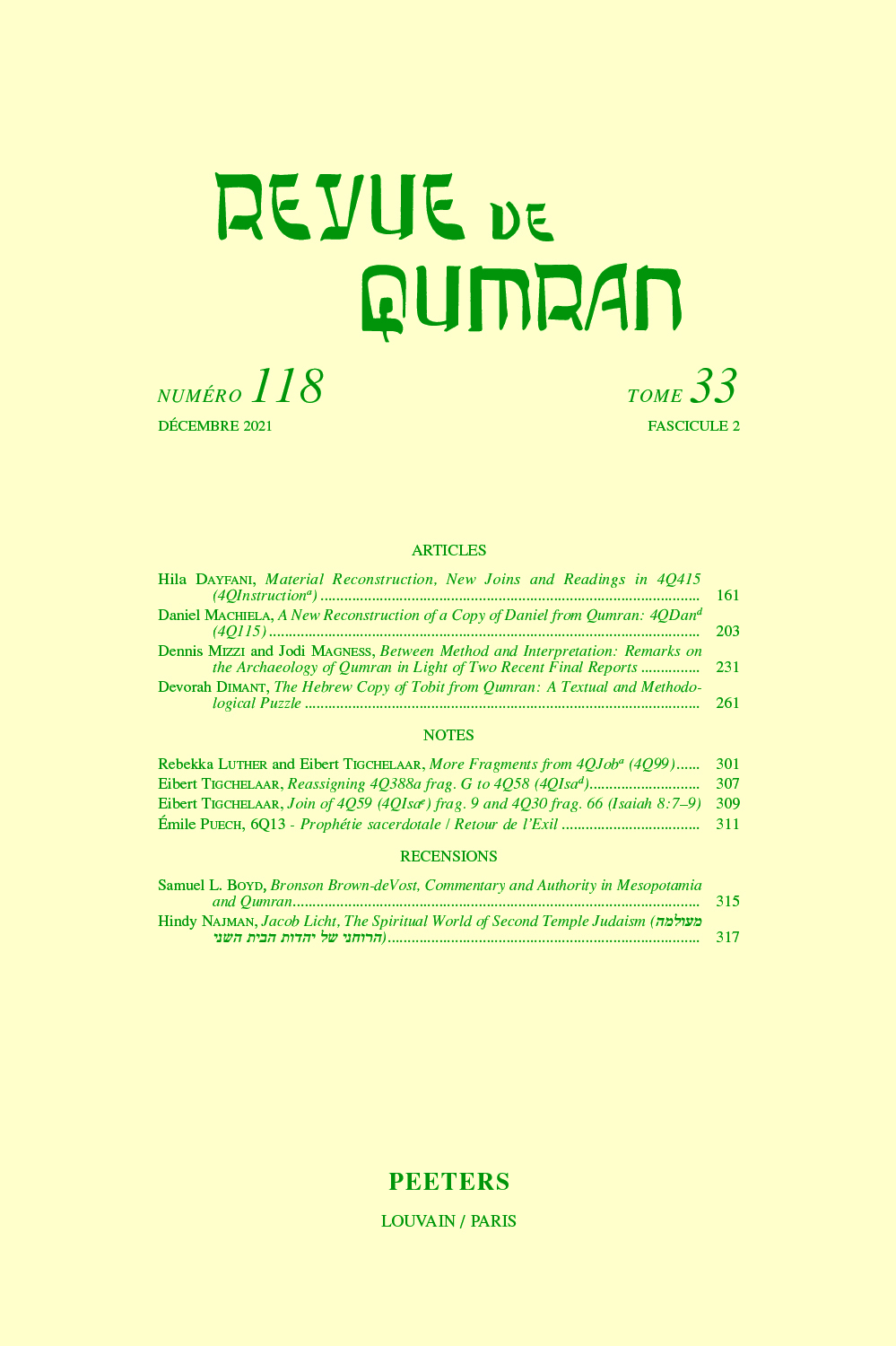next article in this issue  |

Preview first page |
Document Details : Title: A Recovered Law of the Moon in the Enochic Book of the Luminaries Subtitle: 1 En. 78:15-17 + 79:2-5 - 4Q209 26 Author(s): DARDARE, O. Journal: Revue de Qumran Volume: 36 Issue: 1 Date: numéro 123, 2024 Pages: 3-34 DOI: 10.2143/RQ.36.1.3293413 Abstract : The astronomical section of the Book of Enoch schematically addresses the primary cycles of the sun and the moon. However, a part of this book (1 Enoch 78:15-17 + 79:2-5) describing an intriguing 177-day-long waning and waxing of the moon’s illumination remains unexplained. The present article argues that the elliptical aspect of the lunar orbit can explain this variation of the moon’s illumination, presuming that the text refers to the moon when it is full. Using a mathematical simulation, our analysis shows that the schematic anomalistic period capable of explaining the variable illumination described is compatible with the real astronomic value and its Babylonian background. This result demonstrates that the anomalistic cycle of the moon was part of the original Aramaic source of the Ethiopic text known today. This result also corroborates the profound understanding of the astronomy of the sun and the moon that existed in this environment. La section astronomique du Livre d’Hénoch aborde de manière schématique les principaux cycles du soleil et de la lune. Une partie du texte Hénochien (1 Hénoch 78:15-17 + 79:2-5), décrivant une décroissance durant 177 jours de l’illumination de la lune puis une croissance pendant la même durée, reste néanmoins obscure. Cet article propose d’expliquer cette variation de l’illumination par le caractère elliptique de l’orbite lunaire, en supposant que le texte parle de pleines lunes. Par le biais d’une simulation mathématique, notre analyse montre qu’une fonction anomalistique schématique est susceptible d’expliquer cette variation d’illumination, et que la valeur de sa période est compatible avec la valeur astronomique réelle ainsi qu’avec l’arrière-fond babylonien. Ce résultat démontre que le cycle anomalistique de la lune faisait partie du substrat Araméen du livre éthiopien connu aujourd’hui. Ce résultat conforte aussi un peu plus le constat d’une profonde connaissance de l’astronomie du soleil et de la lune dans ce milieu et à cette époque. |
|


